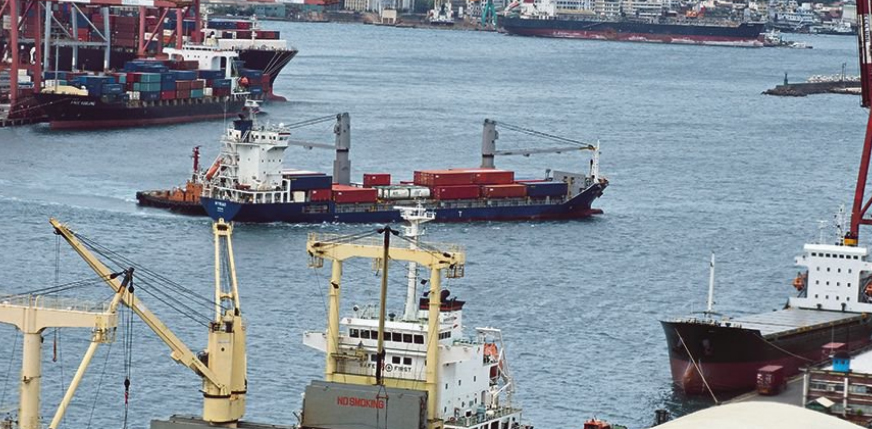IT has been more than two years since the United States first launched investigations into China’s trade and intellectual property. Since then, four different rounds of US tariffs have been slapped on Chinese goods, with a fifth round due to come into effect on Oct 15.
By the time this fifth round of tariffs is applied, virtually all of the US$550 billion imports from China into the US will be subject to an average tax of about 25 per cent at the US border. In retaliation, China is set to impose its own tariffs on more than US$185 billion worth of US goods.
As the trade conflict rages on, battle scars all over the world are becoming increasingly apparent, compounded by a backdrop of global geopolitical uncertainty. Global trade growth has slumped into contractionary territory, recording the slowest growth since the Global Financial Crisis. Likewise, global industrial production has softened, and policymakers and market participants are becoming increasingly wary about the prospects of an impending global recession.
The US, long regarded as a bright spot of economic activity, has also seen its growth engines begin to sputter. Even US President Donald Trump, a steadfast cheerleader of US tariffs, has been forced to concede that American businesses have been harmed. In recent months Trump has expanded the number of tariff exclusions and increased subsidies to US farmers. The macro numbers have certainly turned less cheery, too: over the last two months, US core capital goods orders, a proxy for business investment, have contracted.
The Chinese economy, which was already structurally slowing even before the tariffs, has been further buffeted despite the best efforts of Chinese policymakers to mobilise monetary and fiscal stimulus to bolster growth. Economic growth has continued to inch down to multi-decade lows.
Measures of manufacturing activity have tumbled into negative territory, while China’s exports to the US have declined sharply.
Elsewhere in Asia, two opposing effects are playing out: the first is a negative effect from a general decline in global demand amid increased uncertainty. The second is a positive effect from potential trade and investment diversions. The longer the trade war persists, the more this negative effect will wipe out any positive diversion effects.
For economies like Vietnam and Taiwan, which have been some of the biggest beneficiaries from trade diversion, things have been relatively smooth sailing so far. Yet, for most economies in the region, the effects of the trade conflict have been more ambiguous.
East Asian economies like Japan and South Korea have seen gains in exports of specific goods like motor vehicle and aircraft parts to the US, yet on aggregate, export growth has moderated. Similarly, the latest economic data from both economies have been worrying, with capital spending and industrial production showing fresh signs of weakness.
Meanwhile, almost every major central bank in Southeast Asia has either already cut interest rates over the past year, or are expected to cut rates soon. Likewise, despite seeing some limited gains in trade diversion, Southeast Asian economies like Thailand and Singapore have also seen economic activity slip to multi-year lows with measures of exports and factory production tumbling. In Malaysia, growth has so far been somewhat more resilient, though exports have also taken a hit, with export growth trending downwards in the past year.
Amid the turmoil, countries in the region have begun to respond. Thailand has recently unveiled a “relocation” package which includes tax incentives and investment-friendly regulations aimed at attracting investment diversion.
Likewise, Malaysia has established a new committee to fast-track approvals for foreign investment and assembled a “trade war task force”. Meanwhile, Asian economies in the region have stepped up efforts to complete the signing of the Regional Comprehensive Economic Partnership trade agreement — while non-ratified signatories of the CPTPP may consider accelerating their ratification efforts.
Yet, for developing Asia, boosting international trade and investment alone is not enough. Perhaps more important is ensuring that foreign investment is channelled towards national development and towards increasingly high-value-added domestic production — rather than just being conduits for foreign profits. To this end, developing Asian economies, including Malaysia, would do well to avoid using overly-generous tax incentives to pander to corporate interests who do not play a role in national development.
Simultaneously, other longer-term policies aimed at improving human capital development and increasing domestic investment are crucial too.
After all, it is becoming increasingly clear that trade wars are far from “good and easy to win”, even for onlookers in Asia looking to gain from trade and investment diversion. Nevertheless, the economic conflict between the US and China will not diminish anytime soon, even if a trade deal is signed. Just as the last full-blown trade war during the Smoot-Hawley tariffs in the 1930s set in motion the creation of the system of world trade we know today — so too could this US-China tariff conflict bring about a new global trading order.
This article first appeared in the New Straits Times on October 3, 2019





